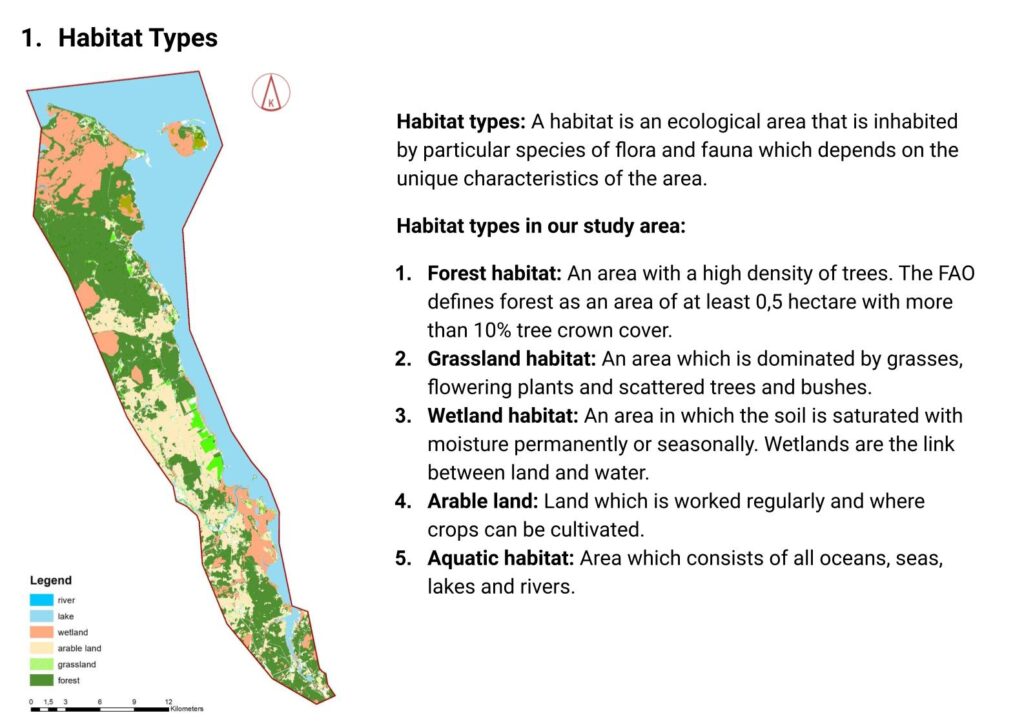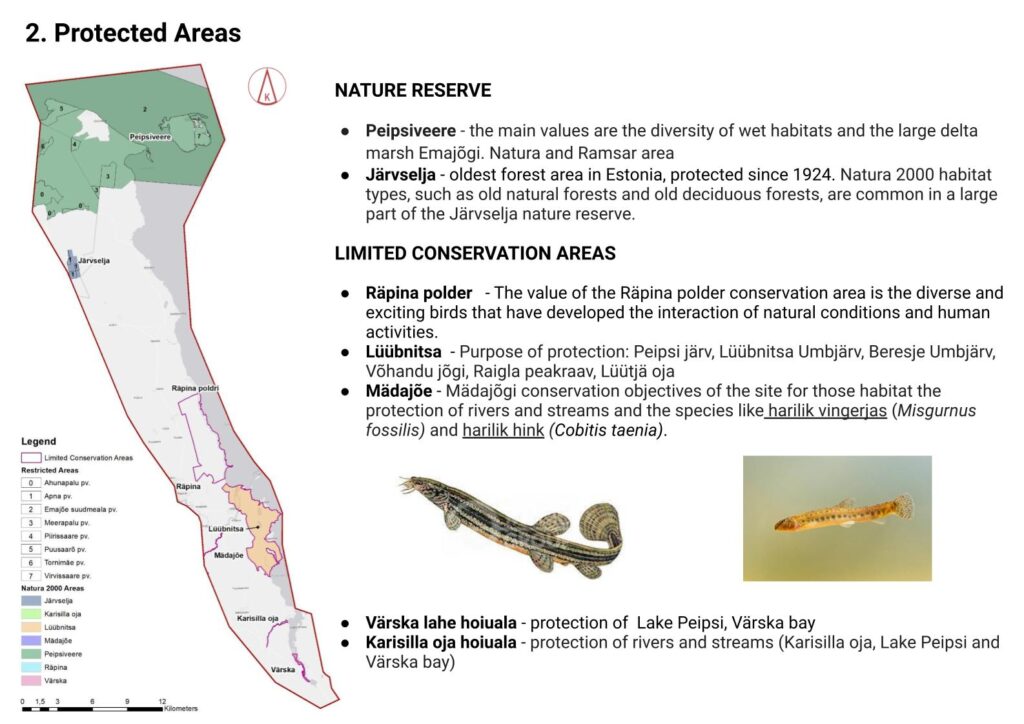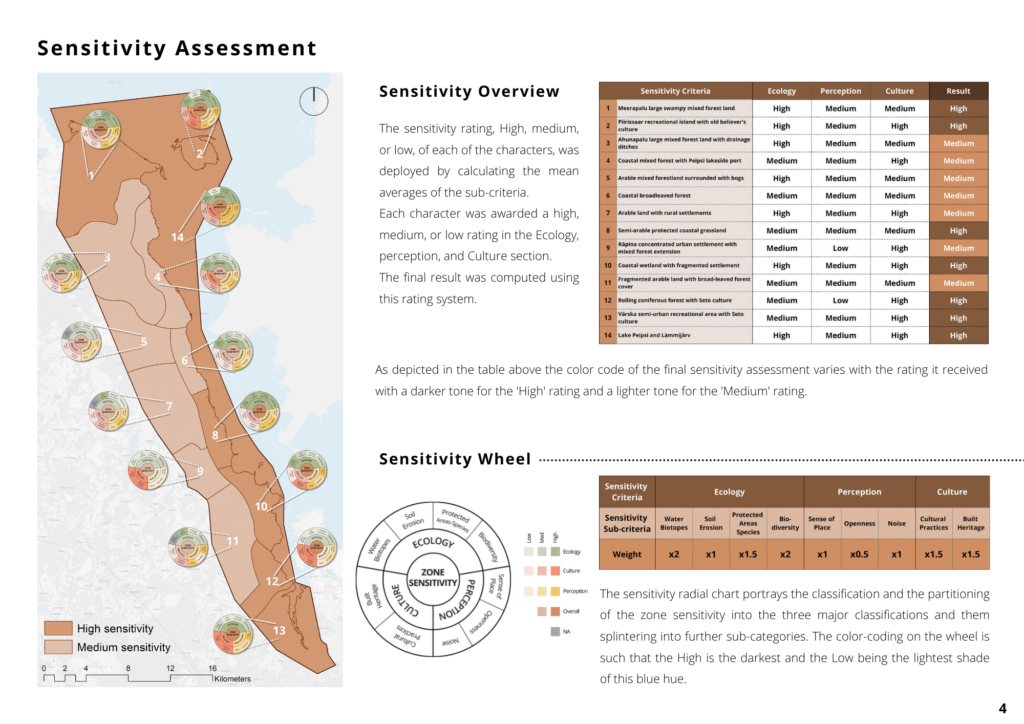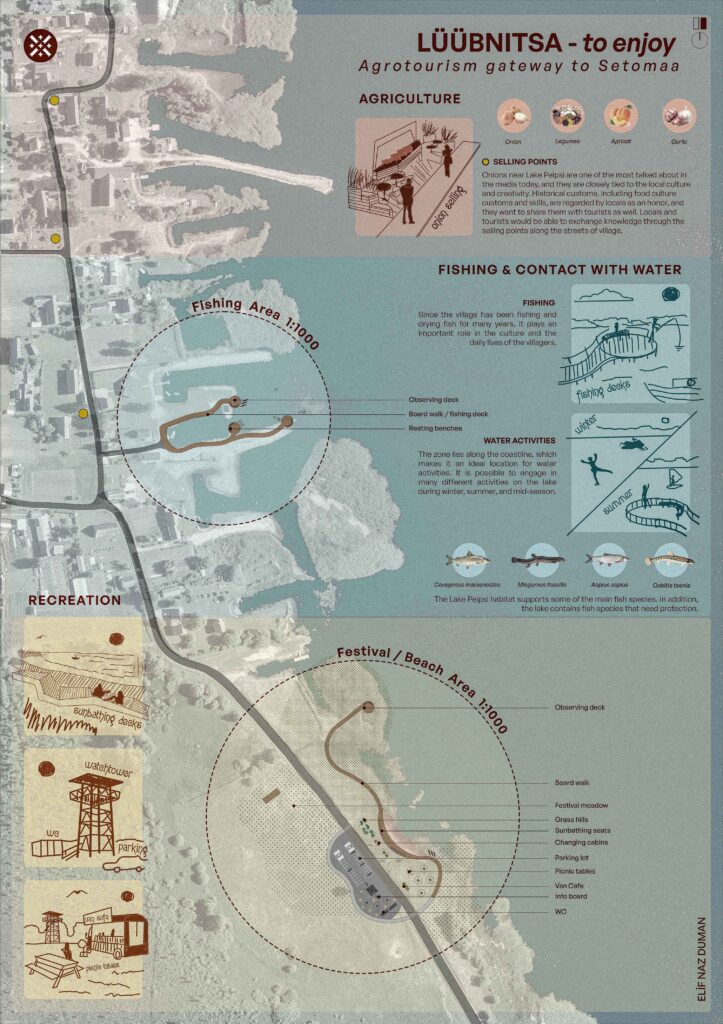The project Lüübnitsa-Agrotourism Gateway to Setomaa is an outcome of the semester long course "Planning and Design for Outdoor Recreation". The course was coordinated by Prof. Simon Bell and supervised by Jekaterina Balicka, Martti Veldi and Shimin Huang.
Phase 1
Team members: Elif Naz Duman, Sven van Ooijen, José Estrada-Arbeláez, Jaanika Meltsas, Ann-Katrin Rainer, Laura Kipper
During the first phase, we were divided into 4 groups to collect data about: the ecology, culture, existing facilities and the tourism market of the project area. As I was taking part in the ecology group, we made our preliminary analysis for the habitat types, nature protection statuses of the area, flora and fauna information and stakeholders on a regional and local level.


Phase 2
Team members: Elif Naz Duman, Katri Dremljuga-Grüneri, Pouria Malih, Kartik Padmanabhan

Through this phase, we have indicated our progress in landscape character assessment for the given study area. The final goal of this assessment is to identify separate areas with dominant landscape characters and describe them with various visual and logical tools like sketches, photos, and maps. A combination of desk study and field trips structured our methodology, by having 2 field trips, along with real perception and feeling of the atmosphere of the area, we had this chance to take photos and capture the moment to use it in the analysis phase.
Phase 3
Team members: Elif Naz Duman, Katri Dremljuga-Grüneri, Pouria Malih, Kartik Padmanabhan
Phase three of the project, landscape capacity assessment, includes three stages of analysis, measuring sensitivity, suitability, and capacity. Each of these stages was explained and assessed at this phase thoroughly.





